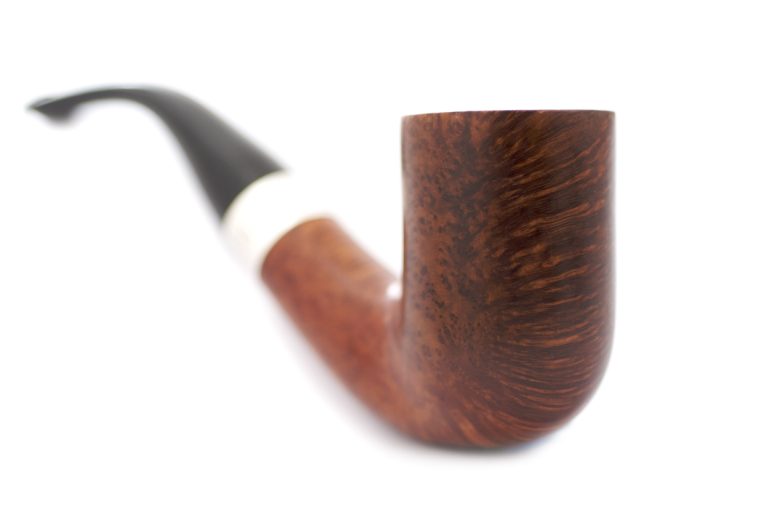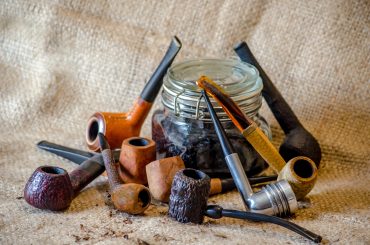Smoking a briar wood pipe is a delightful pastime that offers a perfect blend of relaxation, contemplation, and enjoyment. For beginners, embarking on this journey might seem a tad daunting, but fear not! This comprehensive guide is designed to take you through every step, from selecting your briar and pipe tobacco to savoring the nuances of different pipe tobacco blends. With patience, practice, and a willingness to learn, you’ll soon find yourself reveling in serious pipe tobacco smoking.
Make sure to also check out
Choosing Your Briar Pipe
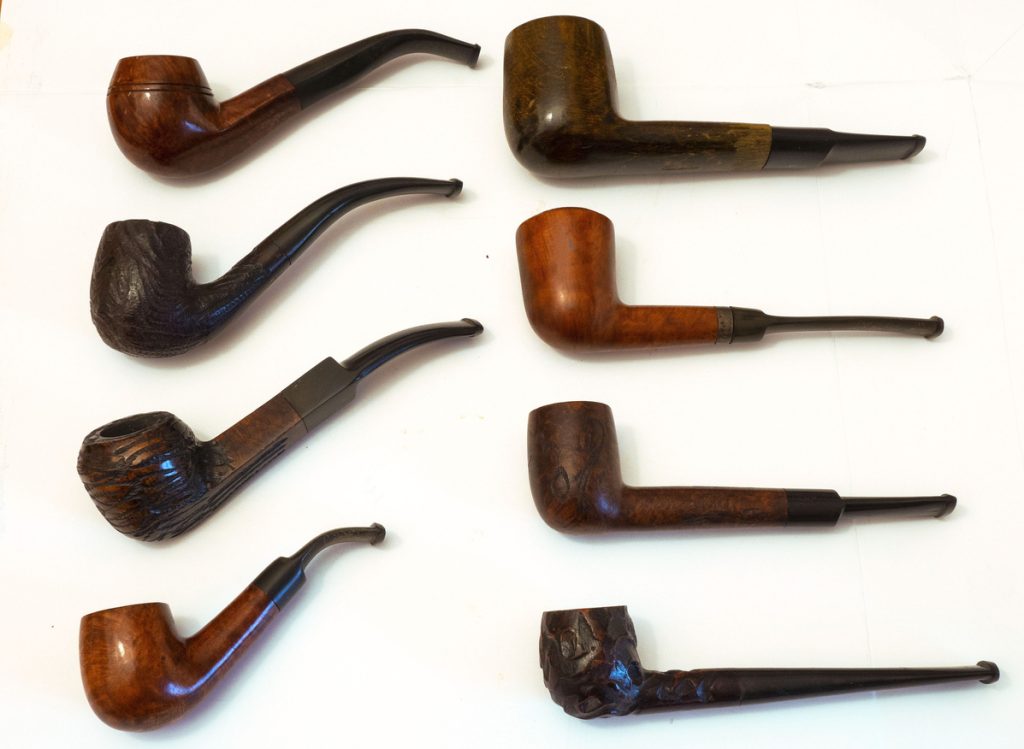
When you embark on your pipe-smoking journey, selecting the right briar wood pipe is your first important decision to start your pipe smoking off with. Briar wood, derived from the roots of the Mediterranean heath tree, is renowned for the exceptional qualities that make it a preferred choice for pipe making and tobacco smoking pipes.
Why Choose Briar Wood
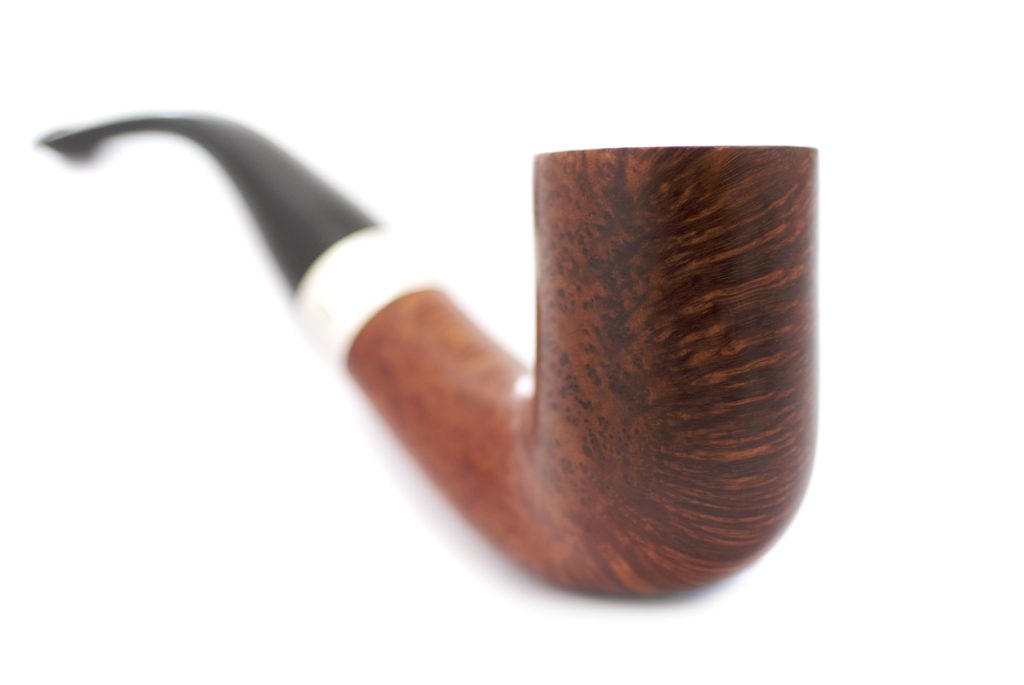
Briar wood possesses several characteristics that make it an excellent material for crafting pipes:
1. Heat Resistance: Briar wood has an inherent ability to withstand high temperatures. This heat resistance is crucial when smoking a tobacco pipe, as it prevents it from becoming too hot to handle and minimizes the risk of burning the wood.
2. Natural Beauty: Briar boasts a distinctive grain pattern and coloring, making each pipe a unique work of art. As you smoke your pipe regularly, the wood develops a patina that enhances its visual appeal over time.
3. Resistance to Moisture: Pipes are often exposed to moisture from the tobacco and the pipe smoker’s saliva. Briar wood’s dense composition helps prevent the wood from swelling, warping, or deteriorating due to repeated exposure to moisture.
4. Porosity: The porous nature of briar wood helps absorb moisture and allows the top of the bowl to “breathe.” This characteristic contributes to a drier and more enjoyable smoking experience by reducing the pipe’s gurgling sounds and preventing moisture buildup.
5. Flavor Enhancement: Briar wood has a subtle effect on the flavor of the tobacco. Over time, the wood imparts a slight sweetness that can enhance the overall tobacco smoking experience.
Choosing Your Pipe
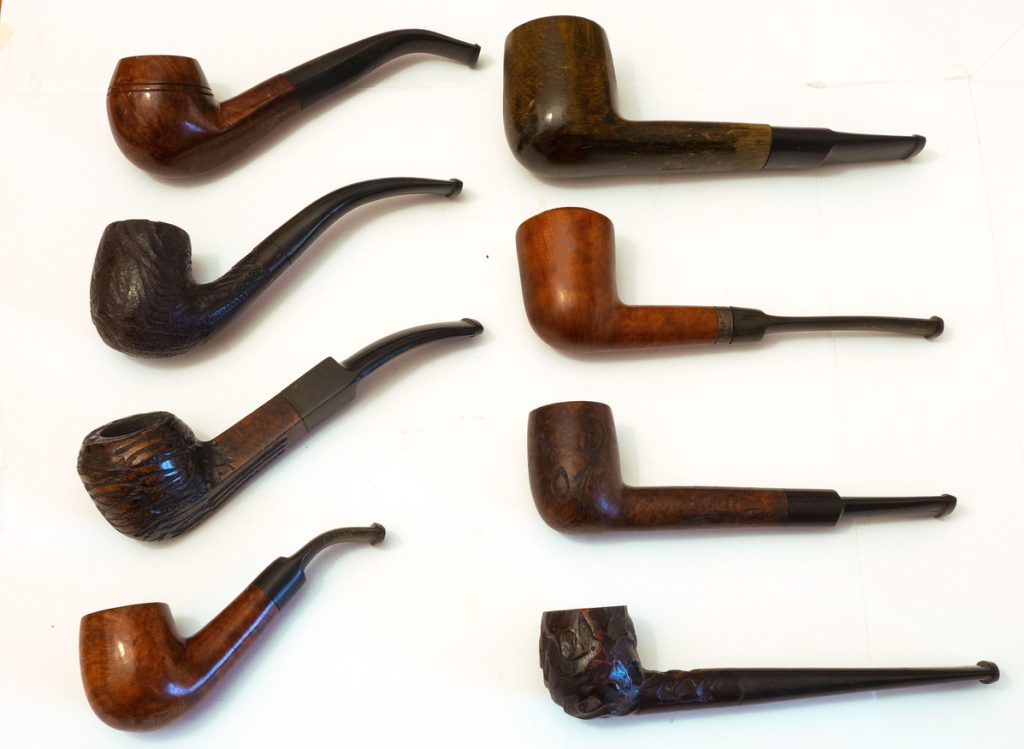
When selecting your briar pipe, consider the following factors:
Shape and Size: Pipes come in various shapes and sizes, each offering a different smoking experience. Common shapes include Billiard, Dublin, Bulldog, and Apple. Choose a shape that appeals visually and feels comfortable in your hand.
Finish: Briar pipes come in various finishes, such as smooth, sandblasted, and rusticated. The finish affects the look and feel of the pipe, so choose one that resonates with your aesthetic preferences.
Mouthpiece: The material and design of the mouthpiece (stem) can impact your smoking comfort. Common mouthpiece materials include vulcanite and acrylic. Opt for a design that feels comfortable when clenched between your teeth.
4. Price Range: Briar pipes vary widely in price. While high-end pipes may offer superior craftsmanship and unique features experienced pipe smokers will seek out, many affordable options for beginners provide a great pipe smoking experience.
Selecting Pipe Tobacco
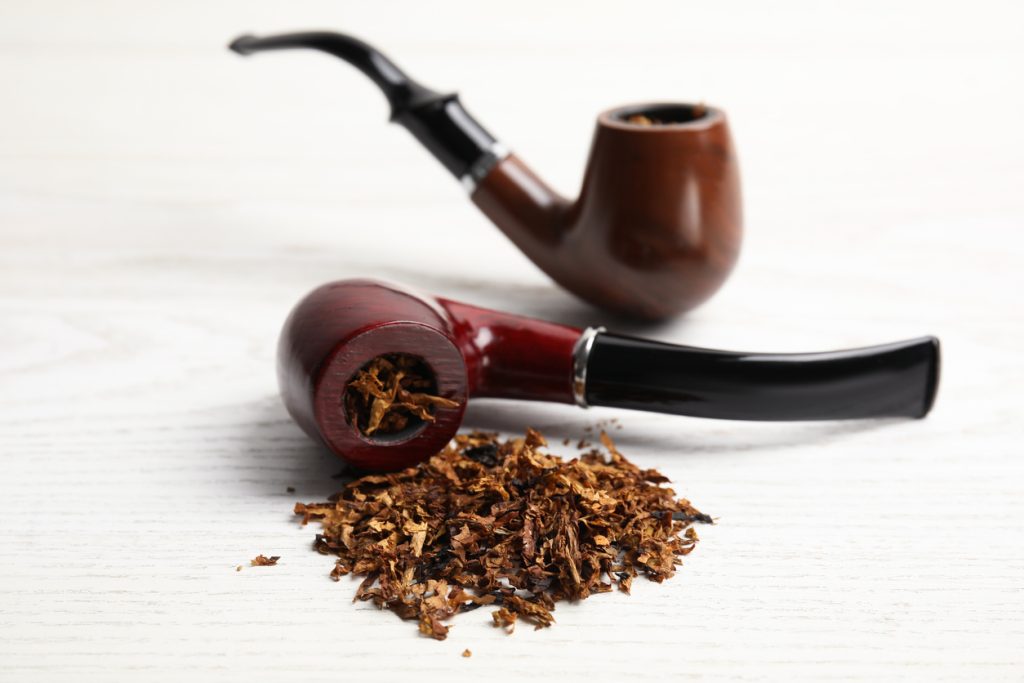
The choice of tobacco is integral to your pipe smoking experience. There are various types of the many pipe smokers’ of pipe smoke or tobacco, each offering distinct flavors, aromas, and characteristics. Here are some common types:
Aromatic Tobacco
Aromatic blends are known for their pleasing and fragrant aromas. These blends often incorporate vanilla, fruit, chocolate, or spice flavorings. Aromatic tobaccos are popular among beginners due to their approachable and enjoyable nature.
English Tobacco
English blends are characterized by their smoky, rich, and robust flavors. They typically contain a higher proportion of Latakia tobacco, which imparts a campfire-like aroma. If you enjoy deeper and more complex flavors, English blends might be your preferred choice.
Virginia Tobacco
Virginia tobacco is celebrated for its natural sweetness and grassy notes. It’s often used as a base in many blends due to its mildness and ability to complement other types of tobacco. If you appreciate a lighter and slightly sweet flavor, Virginia blends are worth exploring.
Burley Tobacco
Burley tobacco offers a nutty, earthy, and slightly cocoa-like flavor. It’s known for burning slowly and providing a ‘cooler’ smoke. Burley blends are a favorite among those who prefer a milder smoking experience.
Perique Tobacco
Perique is a unique and strong tobacco that undergoes a fermentation process. It adds a peppery and fruity dimension to blends. Due to its potency, it’s often used in small quantities and mixed with other tobaccos to enhance the overall flavor profile.
Experimenting with Tobacco Blends
As a beginner, starting smoking with a few small samples of different tobacco blends is recommended first. This will allow you to explore various flavor profiles and discover your personal preferences. Remember that tobacco flavors can evolve as you smoke through a bowl, so take your time to savor each blend.
Preparing for your First Pipe-Smoking Experience
Properly preparing your briar pipe before your first smoke is essential to ensure a smooth and enjoyable experience. The process is also known as “breaking in” your pipe. This section outlines the steps to take before lighting up.
The Pipe Cleaner: Your Pipe’s Best Friend
Before you begin, ensure that your pipe is clean and free from any dust, debris, or residue from the smoking pipe manufacturing process. Use pipe cleaners to clean the pipe’s inside stem and shank gently. This step is crucial for maintaining the integrity of your pipe and preventing any unwanted flavors from interfering with your tobacco’s taste.
Breaking in Your Pipe
New briar pipes require a “breaking in” process to develop a cake layer inside the pipe bowl (we’ll look at its importance further down). The cake layer is a buildup of carbonized tobacco that protects the whole of smoking a pipe bowl’s wood and contributes to a smoother smoking experience.
Below is a step-by-step process to help you break in your pipe for the ultimate pipe-smoking experience.
- Load a small amount of tobacco into the bowl. Fill it loosely to allow for proper airflow. This is also known as packing.
- Light the tobacco and smoke it until it’s burned completely. Focus on puffing gently and evenly to ensure an even charring of the tobacco pipes and bowl’s interior.
- You’ll need to repeat this process for a few bowls before you attempt longer smoking sessions. This gradual approach allows the cake layer to develop without overloading the pipe.
We will explore these steps in more detail in the following sections.
Packing the Bowl
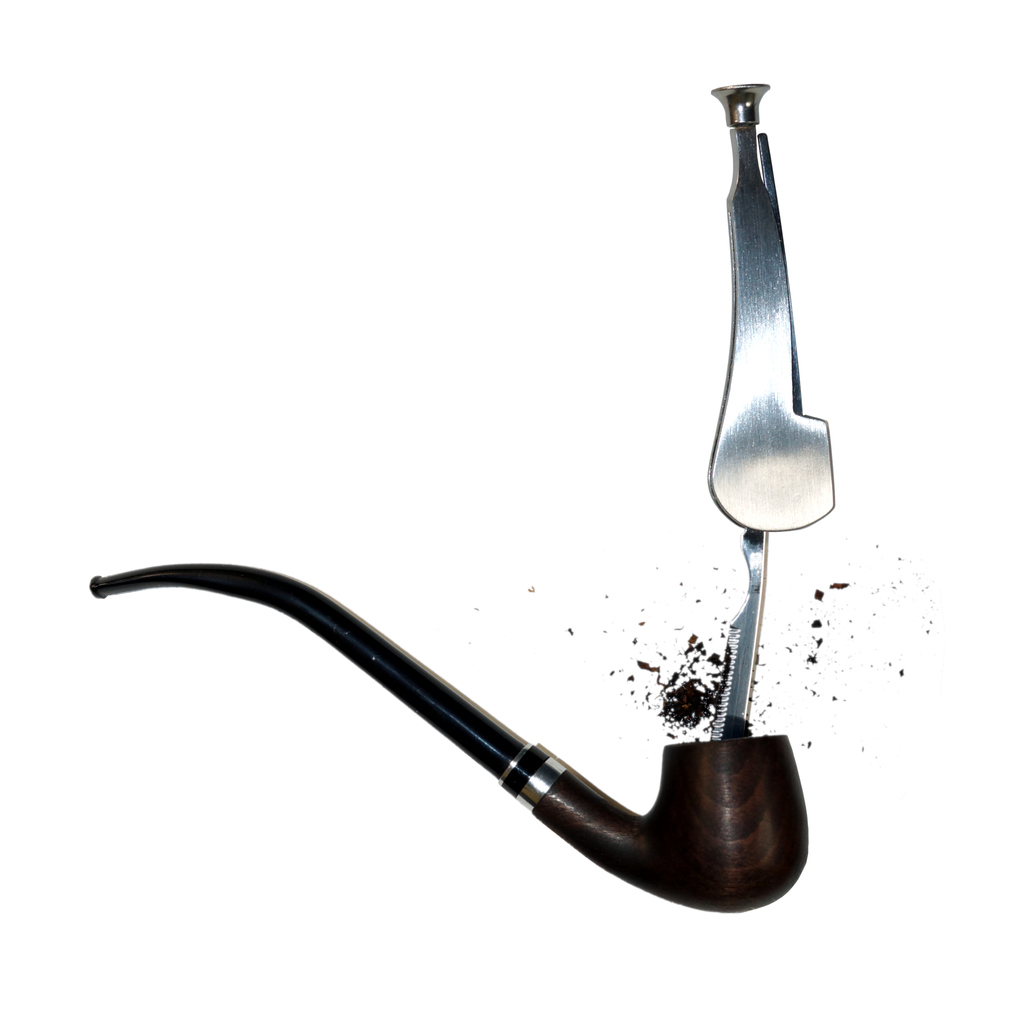
Correctly packing the bowl is crucial for achieving an even burn and a satisfying smoking experience. This section details the steps to follow:
Tobacco Preparation
Before packing the bowl, consider the moisture content of your tobacco. Allow the tobacco to dry slightly before packing if it feels excessively moist. You can achieve this by spreading it on a paper towel or a clean, dry surface for about 15 to 30 minutes.
Packing Technique
There are various packing techniques, but the goal is to achieve a uniform pack for proper airflow. Here’s a step-by-step guide:
- Begin by loosely filling the bowl with tobacco. Avoid pressing the tobacco down too tightly, restricting airflow and leading to uneven burning.
- After filling the bowl, use a tamper to press down the tobacco gently. Aim for a slight resistance while tamping, but be cautious not to over-pack the tobacco. An appropriate pack ensures a steady burn and an optimal draw.
- Add more tobacco to the top of the bowl, again loosely, until it’s slightly overfilled. Use the pipe tamper to press down the loose tobacco once more gently.
Next, we’ll look at lighting up your pipe.
Lighting and Smoking
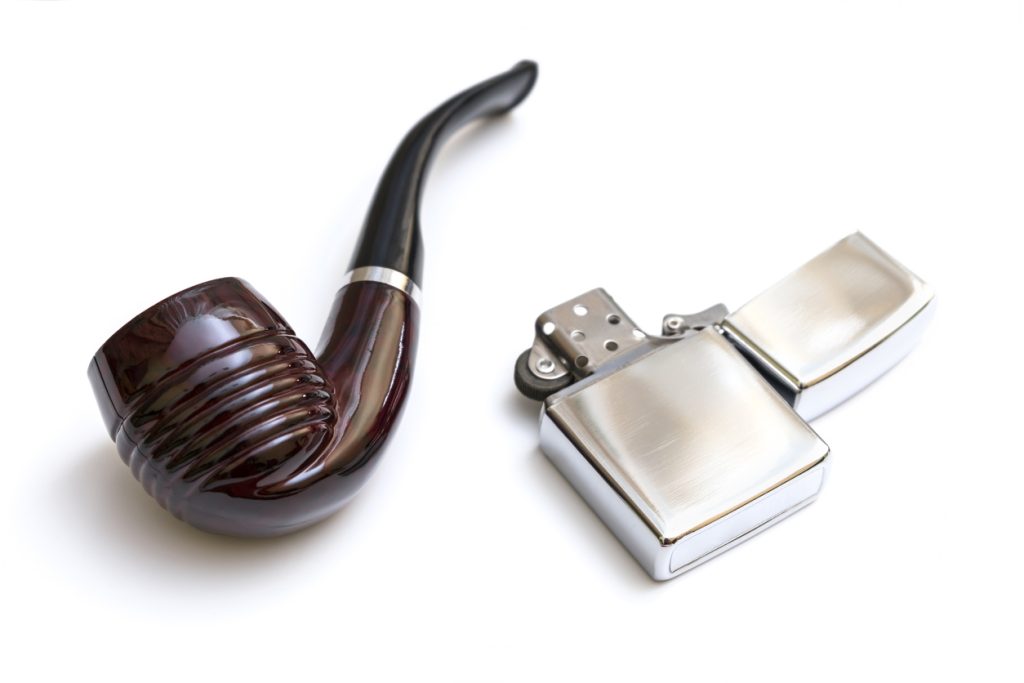
The moment has arrived to light up your briar pipe and immerse yourself in the flavors and aromas of tobacco using your chosen tobacco blend! This section guides you through the process of lighting and smoking your pipe.
Charring Light: The charring light is the initial lighting of the tobacco to create an even burn on the surface. Follow these steps:
- Hold the flame slightly above the tobacco and draw on the pipe while applying the flame. This technique allows the tobacco to catch fire evenly without scorching it.
- As the tobacco ignites, you’ll notice it forming a charred layer. Allow this layer to develop evenly across the surface.
After the charring light, gently tamp down any ash that has formed. Now it’s time for the true light:
- Relight: Use your lighter to relight the tobacco. As you puff, rotate the pipe to ensure an even burn.
- Puffing Technique: Take slow and gentle puffs to avoid overheating the tobacco. Puffing too vigorously can lead to a harsh taste and excessive heat.
- Relighting: It’s normal for the tobacco to go out between puffs. When relighting, puff gently while using the flame to ignite the tobacco evenly. Avoid relighting too aggressively, as it can lead to a bitter taste.
Tending the Bowl
Maintaining an even burn and preventing issues during your smoking session requires some attention. This section outlines how to manage your pipe as you smoke:
Tamping: As you smoke, you’ll notice ash formation and a reduction in tobacco volume. Periodically, use your tamper to press down the ash and remaining tobacco gently. This practice ensures an even burn and a consistent smoking experience. However, avoid pressing too hard, as it can compact the smoking tobacco and impede proper airflow.
Relighting: It’s perfectly normal for tobacco to require relighting, especially as you gain experience. If the tobacco goes out, use a gentle touch while relighting to avoid over-puffing and a bitter, unpleasant taste afterward.
Pipe Maintenance
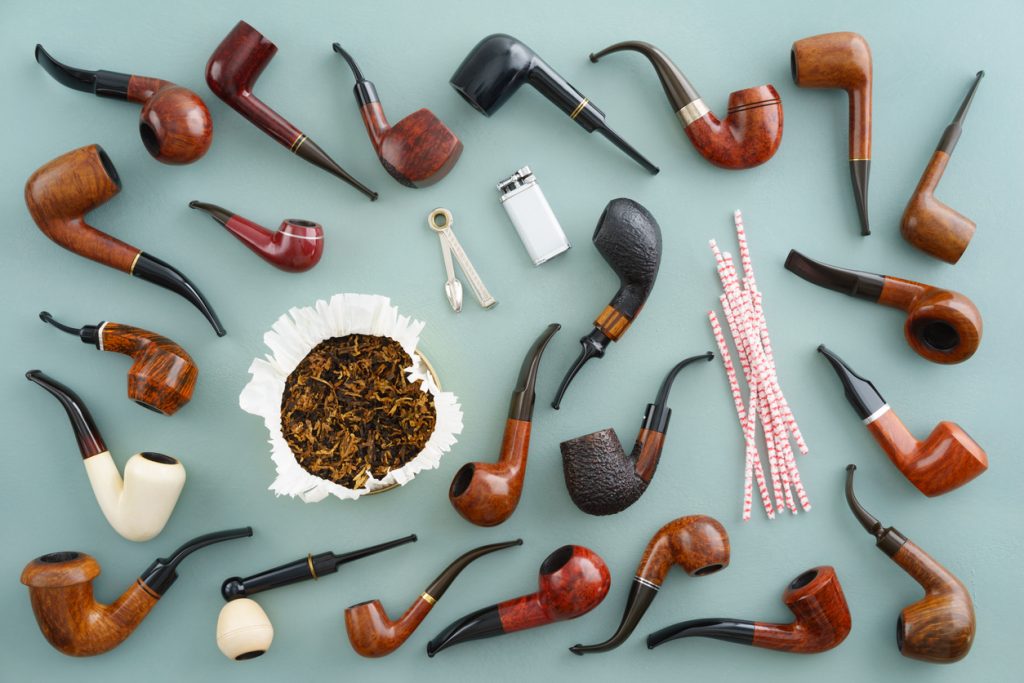
Caring for your briar pipe is crucial to ensure its longevity and the quality of your smokes. This section covers the steps for cleaning and maintaining your pipe:
- After you’ve finished smoking a pipe, allow the tobacco pipe itself to cool down before beginning the cleaning process. This prevents heat-related damage to smoked or tobacco pipes and ensures your safety.
- Once the pipe has cooled, gently tap it to remove any remaining ash. Use a pipe tool to carefully and gently blow and scrape away the excess ash from the bowl’s interior.
- Use pipe cleaners to clean the stem and shank. Insert the pipe cleaner through the stem and into the shank to remove any moisture or residue. This step is essential for maintaining proper airflow and preventing any build-up.
Make dry pipe cleaner and cleaning a regular habit to prevent the accumulation of tar and residue, which can affect the taste of your tobacco. After a few smokes, you might find it necessary to use a reamer or scraper to thin out the cake layer inside the bowl. This step keeps the bowl from narrowing, allowing for a better smoking experience.
Building Up a Carbon Cake: The Secret to Longevity
One of the critical aspects of maintaining your briar wood pipe’s longevity and requiring maintenance is building up a carbon cake. As you smoke your pipe over time, a layer of carbon naturally forms on the interior walls of the bowl. This carbon cake serves several vital purposes. First, it acts as a protective barrier between the burning tobacco and the briar wood, preventing the pipe’s bowl from overheating and ensuring its durability. Second, carbon cake contributes to developing rich, complex flavors, absorbing and releasing the essences of various tobaccos. Last, a well-maintained carbon cake promotes consistent, even burning and reduces the likelihood of dreaded tongue bite – a burning sensation caused by excessive heat.
Join the League of Extraordinary Pipe Smokers

Pipe smoking is not just about smoking tobacco—it’s about creating a personal ritual that allows you to unwind, reflect, and enjoy the moment. Here are some tips to enhance your pipe-smoking experience:
Relax and Savor: Find a comfortable, quiet space to savor your smoke. Whether it’s a cozy corner of your home or a serene outdoor setting, the ambiance plays a role in your enjoyment.
Mindful Smoking: Pipe smoking encourages mindfulness. Focus on each draw, each puff, and each exhale. Let the day’s worries disappear as you immerse yourself in the present moment. Here are some final tips:
- Try out different tobaccos to find the one you like. If the first one you try isn’t your cup of tea, many other blends are available online or at your local tobacconist.
- If your tobacco is too moist, let it dry out a bit before you smoke it. Too much moisture can cause the smoke to be too hot and harsh, leading to tongue bite.
- Don’t force it if your pipe is struggling to stay lit. This will only lead to frustration and burns. If the smoke tastes too hot, let the pipe cool down. If it goes out, tamp it and relight it, but take your time and be patient.
- It takes time and experience to develop a cadence that keeps the pipe lit without overheating the smoke. Everyone’s rhythm is different, so don’t compare yourself to others. You can focus on finding what works best for you.
- Take the time to notice how the flavors evolve as you progress through the bowl—different layers of tobacco burn at varying rates, creating a dynamic and changing experience. Pay attention to the subtleties and nuances in the taste.
- Remember, pipe smoking is all about relaxation and enjoying the moment. So take your time, savor the flavor, and don’t sweat the small stuff.
Conclusion
Smoking a briar wood pipe is a journey that combines craftsmanship, tradition, and sensory exploration of tobacco’s diverse flavors and aromas. From choosing your pipe and tobacco to savoring the experience, each step contributes to a rewarding and enriching pastime. Following this beginner’s guide, you’ll embark on a path that offers relaxation, contemplation, and a deep appreciation for pipe smoking. So take a seat, light up your first pipe yourself, and allow the world to slow down as you indulge in a timeless ritual that has brought joy to countless enthusiasts for centuries.

